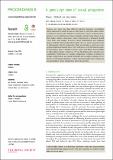A gene’s-eye view of sexual antagonism
Abstract
Females and males may face different selection pressures. Accordingly, alleles that confer a benefit for one sex often incur a cost for the other. Classic evolutionary theory holds that the X chromosome, whose sex-biased transmission sees it spending more time in females, should value females more than males, whereas autosomes, whose transmission is unbiased, should value both sexes equally. However, recent mathematical and empirical studies indicate that male-beneficial alleles may be more favoured by the X chromosome than by autosomes. Here we develop a gene's-eye-view approach that reconciles the classic view with these recent discordant results, by separating a gene's valuation of female versus male fitness from its ability to induce fitness effects in either sex. We use this framework to generate new comparative predictions for sexually antagonistic evolution in relation to dosage compensation, sex-specific mortality and assortative mating, revealing how molecular mechanisms, ecology and demography drive variation in masculinization versus feminization across the genome.
Citation
Hitchcock , T & Gardner , A 2020 , ' A gene’s-eye view of sexual antagonism ' , Proceedings of the Royal Society of London Series B: Biological Sciences , vol. 287 , no. 1932 , 20201633 . https://doi.org/10.1098/rspb.2020.1633
Publication
Proceedings of the Royal Society of London Series B: Biological Sciences
Status
Peer reviewed
ISSN
0962-8452Type
Journal article
Description
Funding: J.H. is supported by a PhD scholarship funded by the School of Biology, University of St Andrews. A.G. is supported by a Natural Environment Research Council Independent Research Fellowship (grant no. NE/ K009524/1) and a European Research Council Consolidator grant (no. 771387).Collections
Items in the St Andrews Research Repository are protected by copyright, with all rights reserved, unless otherwise indicated.

